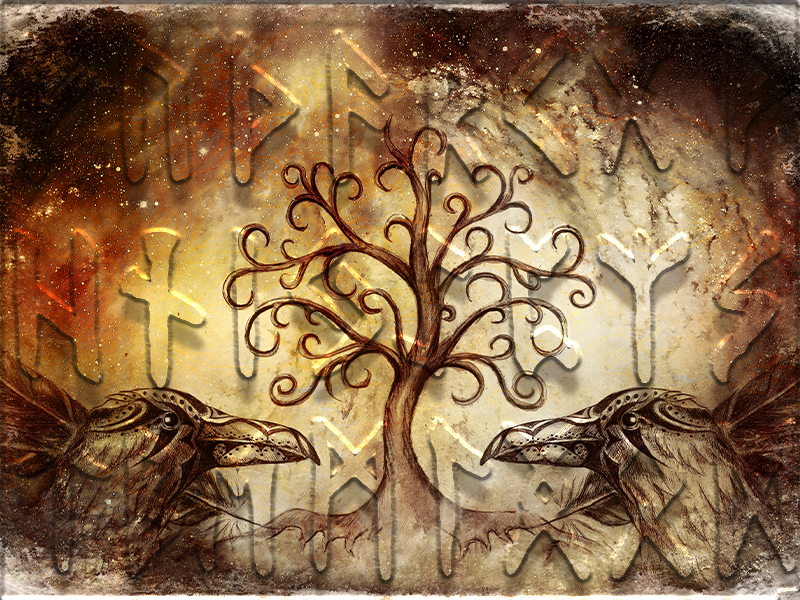Mythology Monday posts are all about exploring the connections and parallels between the Tarot and various characters and stories from world mythologies, but few cards carry quite so direct a parallel as The Hanged Man does to the primary god of Norse mythology, Odin. Today, we’re going to look at that connection, hopefully deepening our understanding of both The Hanged Man and the story of Odin’s sacrifice for knowledge.
Odin’s Sacrifice: An Act of Divine Wisdom
The quest begins with Odin’s acknowledgment of the runes, a magical alphabet with the power to bring about change in the universe. Yet, the runes were not readily available to those who sought them. Instead, they were hidden and only to be revealed to those who proved themselves worthy.
In his hunger for knowledge, Odin decided to embark on the most profound of sacrifices. He took his spear, Gungnir, which was created by the dwarves and never missed its mark, and pierced his side. Then, he hung himself from a branch of Yggdrasil, the immense ash tree that connects the nine realms of Norse cosmology. He was alone in his ordeal, deprived of food and drink, teetering on the edge of life and death. This act was not a moment of despair but a calculated sacrifice, the life of Odin offered to Odin himself, a testament to the cyclical nature of sacrifice in Norse myth.
He hung there for nine days and nine nights, a significant number in Norse mythology. As Odin was tormented, facing down the cold void of death, his pain, his thirst for knowledge, and his sacrifice began to pull the runes out of the darkness and into his understanding. The runes offered him not just the power of written language and communication, but also knowledge of spells and magic that could heal wounds, bind enemies, and protect friends in battle.
When the runes had finally revealed all their secrets to him, Odin, at the brink of death, finally let go of his life on Yggdrasil. But instead of dying, he was reborn with new strength, enlightened and equipped with the knowledge he had so deeply craved. The All-Father had paid an immense price, but in doing so, he had gained wisdom beyond all others.
This story serves as a poignant illustration of the Norse belief in the need for sacrifice to achieve wisdom and the lengths to which Odin would go in his unending quest for knowledge. It also underscores Odin’s role as a god of magic, wisdom, and poetry, for the runes gave him power in these domains.
The Hanged Man and Odin’s Sacrifice
- Sacrifice for Wisdom: The Hanged Man symbolizes the need to let go, to surrender, and to sacrifice in order to gain deeper wisdom or understanding – much like Odin gave himself to himself for the acquisition of knowledge. The card reminds us that sometimes, personal sacrifice is necessary to achieve our greater goals or aspirations.
- Shift in Perspective: Hanging upside down, Odin saw the world from a different perspective. Similarly, The Hanged Man encourages us to change our perspective, to view our circumstances from a different angle, and thereby gain new insights.
- Pause and Contemplation: The image of Odin hanging on Yggdrasil also indicates a time of pause and introspection. The Hanged Man signifies a period of waiting or suspension, and the necessity of introspection before moving forward.
Conclusion
The story of Odin’s sacrifice for wisdom adds a great depth to our understanding of The Hanged Man. The card’s link to this myth reinforces the necessity of surrender, perspective change, and introspection in our journey towards wisdom and personal growth. By embracing these principles, we can embody the transformative energy of The Hanged Man, gaining deep insights and wisdom along the way.

